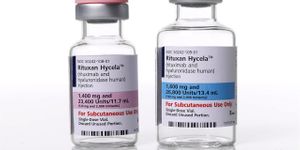New Diagnostic Test for Lyme Disease
Diagnostic tests for Lyme disease, or Lyme neuroborreliosis (LNB) can take up to a week, but patients affected need antibiotics as soon as possible to prevent the risk of life-long symptoms. A new test, developed thanks to Finnish company Reagena and University of Turku scientists, will speed up the process.
LNB is spread by ticks and affects the nervous system, caused by the bacterial species Borrelia burgdorferi. It’s the most common vector-borne disease in the United States; there are 20,000 new cases reported every year. LNB infection occurs in stages.
First, after about three days of infection to up to a month after, many patients experience a target-like rash. Then comes neurologic abnormalities and cardiac involvement in some patients for several months. Musculoskeletal pain and chronic arthritis in large joints, often the knee, can last for years.
The characteristic rash doesn’t always appear, in which case someone might not know they were bit by a tick at all, let alone that they have LNB. The new diagnostic test could help affected people receive antibiotic treatment as soon as possible as well as help avoid unnecessary antibiotic use, reducing the contribution to antibiotic resistance.
Current tests for LNB include looking for infection symptoms, cerebrospinal fluid tests, and antibody production from an activated immune response. The newer test is faster and able to
target antibiotic treatment to people with a high chance of having or developing neuroborreliosis, which can reduce the risk of post-treatment symptoms related to the infection.
The new test detects LNB by measuring concentration of a cytokine called CXCL13 in cerebrospinal fluid. High CXCL13 is a clear and well-known sign of untreated neuroborreliosis. It increases faster during neuroborreliosis than antibiotic concentrations do, and it declines quickly after antibiotic treatment starts.
“We have demonstrated that this point-of-care test is extremely efficient,” explained Jukka Hytonen from the University of Turku, who developed the idea for the new test. “As a result, we suggest that the diagnostic practice for neuroborreliosis in Finland would be reorganised so that the CXCL13 concentration would be measured immediately after the lumbar puncture for cerebrospinal fluid.”
The present study was published in the journal Diagnostic Microbiology & Infectious Disease.
Sources: American Journal of Neuroradiology, University of Turku









